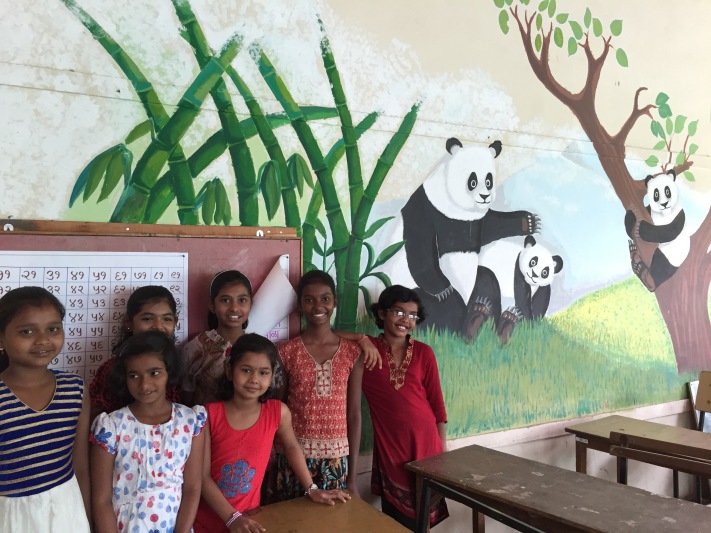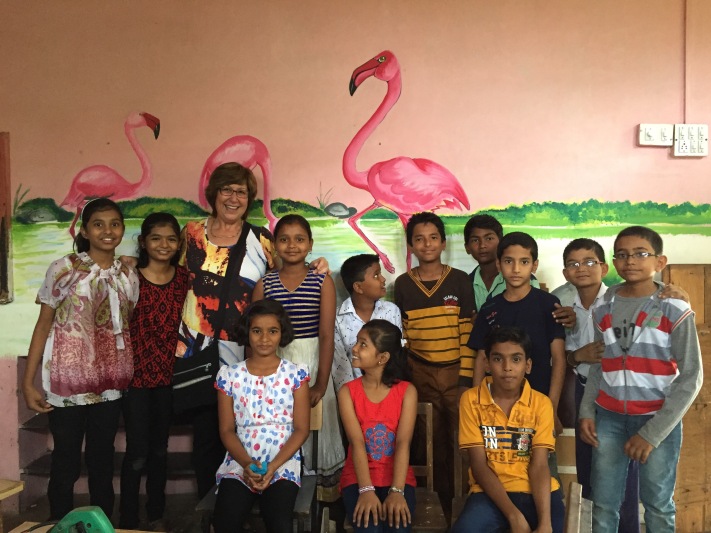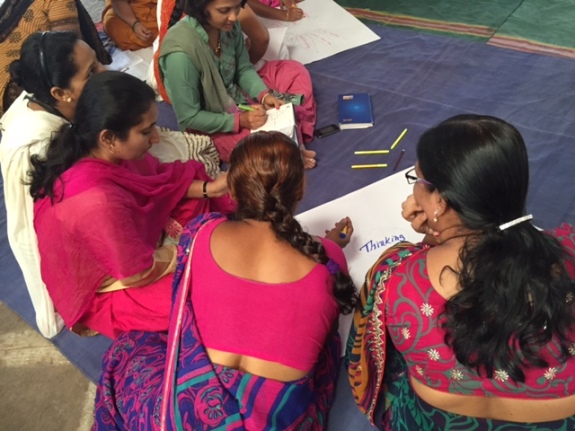‘Where do our families live?’ ‘Where do we go after school?’ ‘Where do we play and do homework?’
Aditya, Diya, Jayesh, Vishaka, Sairaj and the other children with whom I connect weekly via Skype in Granny Cloud sessions, are generating questions, the answer to which is ‘home’. I’ve written before about this Grade 6 class and their school and about the special opportunity I had to meet them in person. This session is a follow-up from last week’s introduction to children’s rights, for which I have googled a Marathi translation, before checking the accuracy with them – मुलांचे हक्क.
Are homes the same everywhere in the world? We look at images of homes, an igloo, a mud hut, a house on the water, a tree house and an underground house (Coober Pedy, Australia) and the children wonder who built these houses, where they are, who lives in them, what materials were used, how they are accessed. Aditya wonders if there is oxygen in the underground house. Atharva asks what would happen if the tree (in which the house is bulit) fell down. Gaurauv asks if I live in an underground house (it’s in Australia, after all) and I take my laptop to the window to show them the garden.
As always, I delight in the fact that the children who once stared blankly back at me from the screen, a strange looking woman talking a foreign language they did not understand, now chat confidently, ask questions, make jokes, think and laugh with me.

The other group with whom I currently engage is at a government girls high school in urban Delhi, relatively close to the original office from which Sugata Mitra began his Hole in the Wall experiments, a school that has been involved in his experiments ever since.
Anshika, Priya, Shivani and the others choose the song ‘I have a Dream’ to sing for me and I ask what dreams they have. ‘I want to be a politician so that I can reduce poverty’, one girl says confidently. One girl dreams of being a doctor, another wants to be a soldier to protect her people and a third hopes to teach the poor who don’t have access to education. Nazreen dreams of being a singer but her parents have forbidden it for religious reasons. Nikita dreams of being a famous singer too… so that she can make money and buy her parents a house and help other less fortunate people.
In the middle of one such session recently, I receive an unexpected call from a Skype number that’s been in my contacts for years. I’m incredulous to see Gouri, whom I have not seen for six years, since she engaged in Granny Cloud sessions as a lively teenager, in the rural village of Shirgaon, in Maharashtra.
Gouri has been selected by the BBC as one of 2016’s 100 inspiring women and camera men lurk discreetly in the background for a news piece as she and I re-engage after all this time. We talk about what we’re doing now and what we remember from the old days, in particular a series of interactions in which she and her classmates talked and sang with a group of Grade 6 students at my school in Australia. (I still recall their wonderful reflections from 2010!) This lovely, poised young woman is an impressive ambassador for the Granny Cloud project.
I marvel at the simplicity of an idea that is so powerful in its implementation. I wonder what Jayesh and Digvijay, Anshika and Farheen will be doing six years from now. And I imagine who they might become in the future…


















